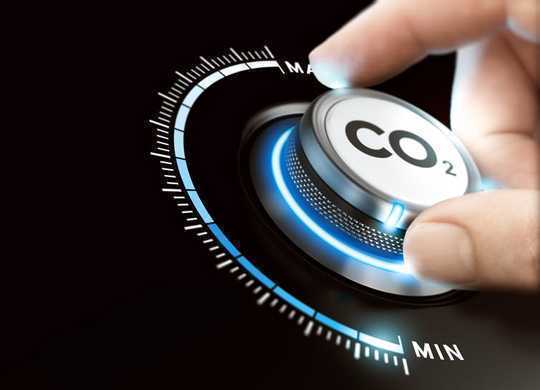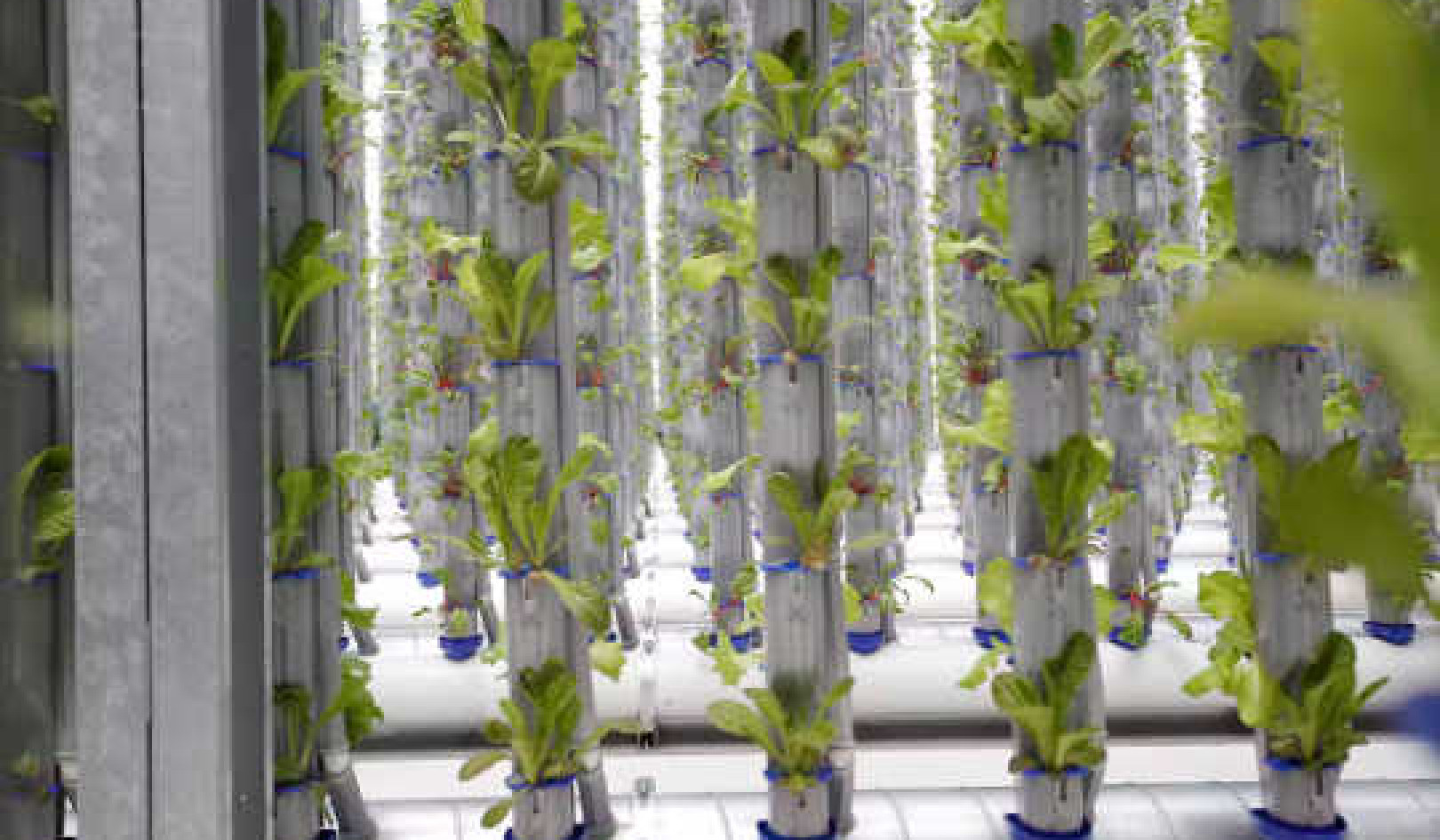 Kalau saja semudah itu. Olivier Le Moal / Shutterstock
Kalau saja semudah itu. Olivier Le Moal / Shutterstock
Menurut PBB besar baru-baru ini melaporkan, if we are to limit temperature rise to 1.5 °C and prevent the most catastrophic effects of climate change, we need to reduce global CO? emissions to net zero by 2050. This means eliminating fossil fuel use fast – but to cushion that transition and offset the areas in which there is currently no replacement for combustibles, we need to actively remove CO? from the atmosphere. Planting trees and rewilding are a bagian besar solusi ini, tetapi kita sangat mungkin membutuhkan bantuan teknologi lebih lanjut jika kita ingin mencegah kerusakan iklim.
So when recent news emerged that Canadian company Carbon Engineering has harnessed some well-known chemistry to capture CO? from the atmosphere at a cost of less than $100 a tonne, many media sources hailed the milestone as a peluru sihir. Unfortunately, the big picture isn’t as simple. Truly tipping the balance from carbon source to carbon sink is a delicate business, and our view is that the energy costs involved and likely downstream uses of captured CO? mean that Carbon Engineering’s “bullet” is anything but magic.
Given that CO? only accounts for 0.04% of the molecules in our air, capturing it might seem like a technological marvel. But chemists have been doing it on small scales since the 18th century, and it can even be done – albeit inefficiently – with supplies from the local hardware store.
As secondary school chemistry students will know, CO? reacts with limewater (calcium hydroxide solution) to give milky-white insoluble calcium carbonate. Other hydroxides capture CO? in the same way. Lithium hydroxide was the basis of the CO? absorbers that kept the astronauts on Apollo 13 alive, and potassium hydroxide captures CO? so efficiently that it can be used to measure the carbon content of a combusted substance. The 19th-century apparatus used in this latter procedure still features on the American Chemical Society’s logo.
Unfortunately, this isn’t a small-scale problem anymore – we now need to capture billions of tonnes of CO?, and fast.
Carbon Engineering’s technique is hydroxide chemistry at its best. At its pilot plant in British Columbia, air is pulled in by large fans and exposed to potassium hydroxide, with which CO? reacts to form soluble potassium carbonate. This solution is then combined with calcium hydroxide, producing solid and easily separable calcium carbonate, along with potassium hydroxide solution, which can be reused.
 Kalsium karbonat dapat digunakan sebagai pupuk tanah. Nordic Moonlight / Shutterstock
Kalsium karbonat dapat digunakan sebagai pupuk tanah. Nordic Moonlight / Shutterstock
This part of the process costs relatively little energy and its product is essentially limestone – but making mountains of calcium carbonate doesn’t solve our problem. Though calcium carbonate has uses in agriculture and construction, this process would be far too expensive as a commercial source. It also isn’t a practical option for government-funded carbon storage due to the massive quantities of calcium hydroxide that would be required. To be feasible, direct air capture needs to produce concentrated CO? as its product, which can either be safely stored or put to use.
Thus, the solid calcium carbonate is heated to 900 °C to recover pure CO?. This last step requires a vast amount of energy. In Carbon Engineering’s natural gas-fired plant, the whole cycle generates half a tonne of CO? for every tonne captured from air. The plant does capture this extra CO?, and of course could be powered by renewable energy for a healthier carbon balance – but the problem of what to do with all the captured gas remains.
Swiss start-up company Climeworks is using similarly captured CO? to fotosintesis bantuan and improve crop yield in nearby greenhouses, but as yet the price is nowhere near competitive. CO? can be sourced elsewhere for as little as one-tenth of Carbon Engineering’s $100 bottom line. There are also much cheaper ways for governments to offset emissions: it is far easier to capture CO? at the emission source, where the concentration is much higher. So this technology is likely to mainly interest high-emitting industries which may stand to benefit from CO? with green credentials.
Sebagai contoh, salah satu investor utama dalam teknologi penangkapan Teknik Karbon adalah Occidental Petroleum, pengguna utama Pemulihan Minyak yang Ditingkatkan methods. In one such method, CO? is pumped into oil wells to increase the amount of crude oil that can be recovered, thanks to increased well pressure and/or improving the flow characteristics of the oil itself. However, including the energy cost of transporting and refining this extra oil, using the technology in this way will likely increase net emissions, not decrease them.
Kunci lain berbicara tentang operasi Teknik Karbon adalah miliknya Air Untuk Bahan Bakar technology, in which CO? is converted into combustible liquid fuel, ready to be burned again. Theoretically this provides a carbon-neutral fuel cycle, provided that each step of the process is powered with renewable energy. However, even this use is still a far cry from a negative emissions technology.
Metal-organic frameworks are porous solids capable of capturing CO?.
{disematkan Y=m91P-R3kxOs}
There are promising alternatives on the horizon. Metal-organic frameworks are sponge-like solids that squeeze the equivalent CO? surface area of a football pitch into the ukuran gula batu. Using these surfaces for CO? capture requires far less energy – and companies have started exploring their commercial potential. However, large-scale production has not been perfected, and questions over their long-term stability for sustained CO? capture projects mean that their high cost is not yet merited.
With little chance that technologies still in the laboratory will be ready for gigatonne-scale capture within the next decade, the methods employed by Carbon Engineering and Climeworks are the best we currently have. But it’s important to remember that they’re nowhere near perfect. We will need to switch to more efficient methods of CO? capture as soon as we are able. As Carbon Engineering’s founder David Keith himself menunjukkan, teknologi penghilangan karbon dilebih-lebihkan oleh para pembuat kebijakan, dan sejauh ini telah menerima dana penelitian yang “sangat kecil”.
Secara lebih umum, kita harus menahan godaan untuk melihat penangkapan udara langsung sebagai peluru ajaib yang menyelamatkan kita dari keharusan mengatasi kecanduan karbon kita. Mengurangi atau menetralkan beban karbon dalam siklus hidup bahan bakar hidrokarbon dapat menjadi langkah menuju teknologi emisi negatif. Tapi hanya itu - sebuah langkah. Setelah berada di sisi yang salah dari buku besar karbon begitu lama, sudah waktunya untuk melihat lebih dari sekadar mencapai titik impas.
Tentang Penulis
Chris Hawes, Dosen Kimia Anorganik, Universitas Keele
Artikel ini diterbitkan kembali dari Percakapan di bawah lisensi Creative Commons. Membaca Artikel asli.
Buku terkait
at Pasar InnerSelf dan Amazon
























